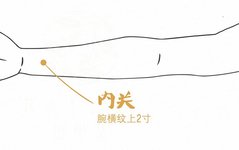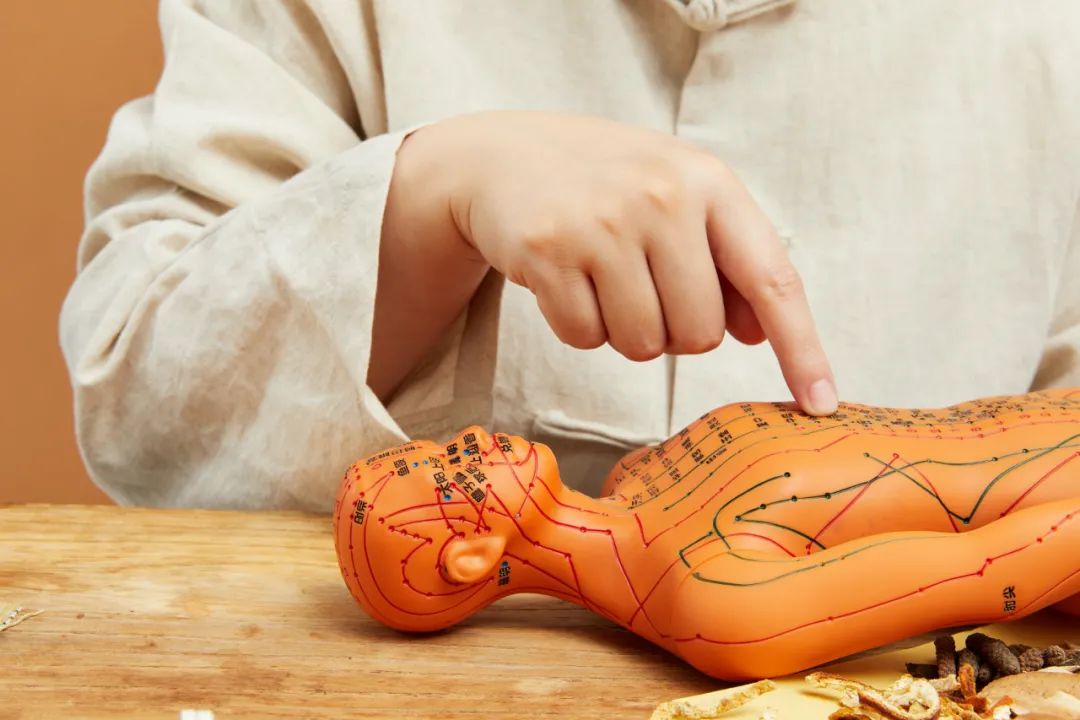


The Extraordinary Meridians (Qi Jing Ba Mai) refer to the Governing Vessel (Du Mai), Conception Vessel (Ren Mai), Penetrating Vessel (Chong Mai), Girdle Vessel (Dai Mai), Yin Linking Vessel (Yin Wei Mai), Yang Linking Vessel (Yang Wei Mai), Yin Heel Vessel (Yin Qiao Mai), and Yang Heel Vessel (Yang Qiao Mai). Unlike the twelve regular meridians, they do not directly connect to the organs and do not have a paired relationship, hence they are called “extraordinary”.
In addition to the twelve regular meridians, the human body has a more important balancing system, which is the Extraordinary Meridians. They are our lifelines; as long as you massage the major acupoints on these meridians daily, you will feel a surge of clear Yang energy in your body.
The Extraordinary Meridians regulate the accumulation and infusion of Qi and blood in the twelve meridians. There are eight representative acupoints in the eight meridians: Gong Sun (Gong Sun), Nei Guan (Nei Guan), Lin Qi (Lin Qi), Wai Guan (Wai Guan), Shen Mai (Shen Mai), Hou Xi (Hou Xi), Lie Que (Lie Que), and Zhao Hai (Zhao Hai).
Each acupoint is like a “nuclear reactor”; treating one can affect a large area!

 1. Nei Guan (Nei Guan): Nourishing Beauty and Heart
1. Nei Guan (Nei Guan): Nourishing Beauty and Heart
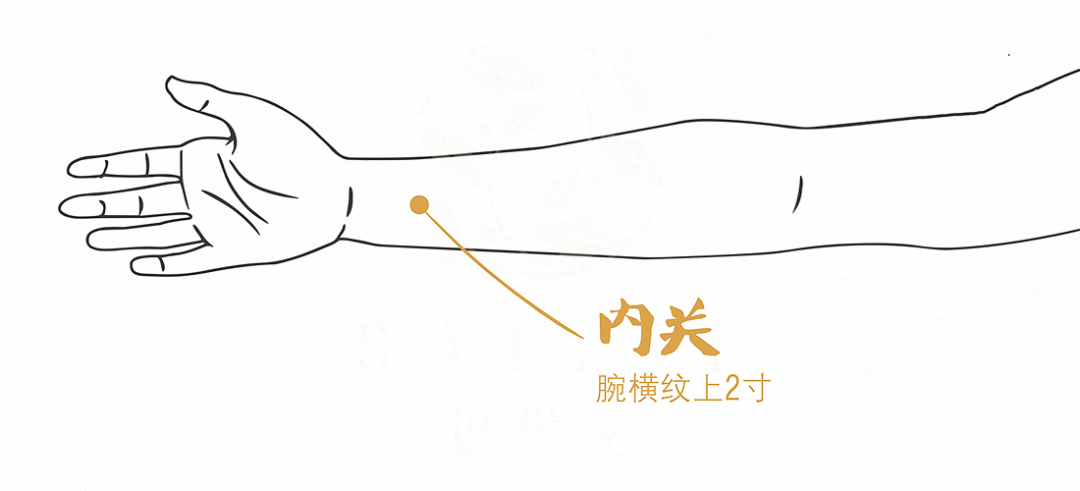
Many women between the ages of 40 and 50 often experience symptoms such as palpitations, shortness of breath, and night sweats. Hospitals may not find any specific illness, only vaguely diagnosing it as menopausal syndrome or sub-health.
According to ancient wisdom, women at this age are generally in a phase of decline, with aging starting from the Yangming Meridian, gradually leading to a decline in the Qi and blood of the three Yang meridians.
When the Qi and blood cannot reach the face, wrinkles and spots appear. Beauty is closely related to Qi and blood. The heart governs the spirit, and its essence is reflected in the face. The spirit of the heart relies on Qi and blood for nourishment; when Qi and blood are sufficient, it naturally reflects on the face. Therefore, women should first nourish the heart to enhance beauty.
The Nei Guan acupoint belongs to the Pericardium Meridian, connects with the Conception Vessel, and is one of the meeting points of the eight meridians. Its true efficacy lies in its ability to open the body’s internal mechanisms, benefiting Qi and blood, calming the spirit, and enhancing beauty.
Nei Guan is easy to locate, situated two inches above the wrist crease on the inner side of the arm. To locate it, make a loose fist and place it palm-up; align the index, middle, and ring fingers with the wrist crease, and the point where the index finger touches is Nei Guan. The benefit of this acupoint in health maintenance is that it can be pressed anytime and anywhere, with a slight feeling of soreness being ideal.
2. Wai Guan (Wai Guan): The “Clever Ear Acupoint”
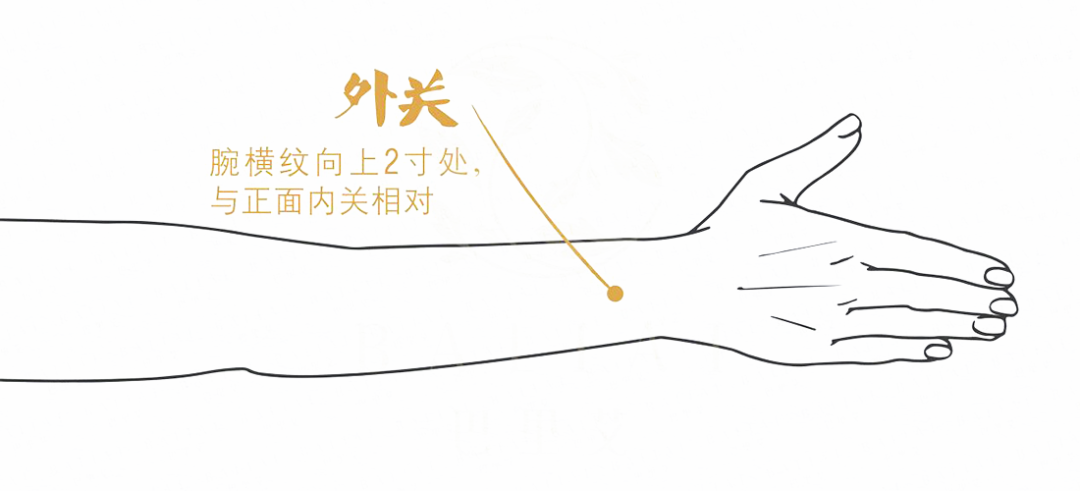
Traditional Taoist medicine believes that temporary hearing issues are a manifestation of insufficient Yang energy in the body. So, what role does Wai Guan play in this situation? Massaging the Wai Guan acupoint can invigorate the original Yang energy of the San Jiao (Triple Burner) and guide the original Qi to circulate throughout the body.
Clinically, Wai Guan can also be used to treat acute lumbar sprains. A patient in his 40s bent down to pick something up and suddenly could not move his waist; any slight movement caused unbearable pain. After treatment with acupuncture and massage at both Wai Guan points, and performing gentle twisting movements of the waist, the pain completely disappeared within minutes, and he could move normally again.
Wai Guan is a Luo point of the San Jiao Meridian, located two inches above the wrist crease on the back of the wrist, opposite to Nei Guan. It connects with the Yang Wei acupoint, has the effects of dispelling exterior pathogens, relieving wind, and alleviating pain. It is not only effective for acute lumbar sprains but also beneficial for arthritis and cervical spondylosis.
3. Lie Que (Lie Que): Special Treatment for Stiff Neck and Migraine
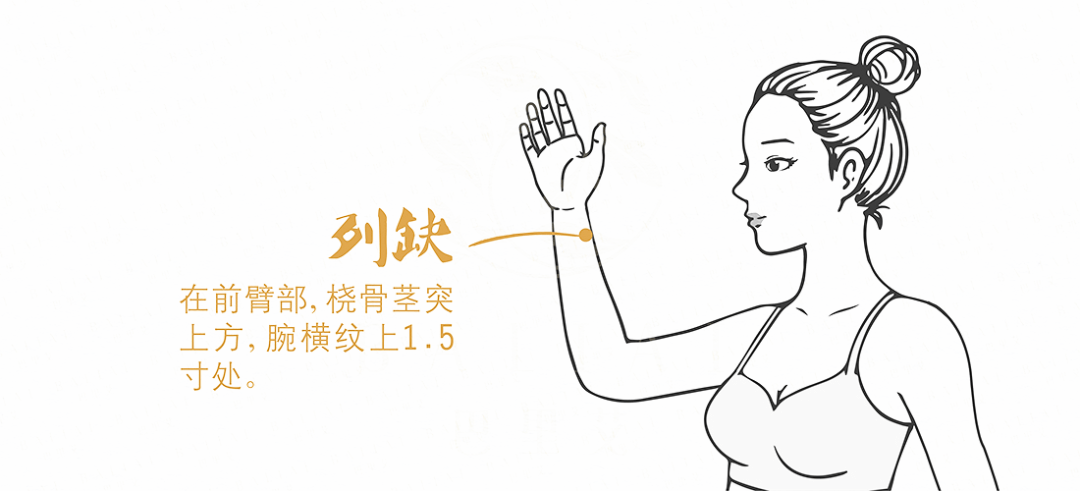
Almost everyone has experienced a stiff neck, which can be quite painful. A stiff neck is also an early signal of cervical spine issues. If not addressed promptly, frequent stiff necks may lead to cervical spondylosis. The Lie Que acupoint has unique effects in preventing cervical spondylosis. On the human body, Lie Que is a tool for repairing head-related ailments.
The Huangdi Neijing states that the Lie Que acupoint primarily treats migraines, headaches, and stiff necks. The Great Compendium of Acupuncture includes a famous verse: “For neck and head ailments, seek Lie Que,” indicating that this acupoint can be used to treat and regulate all conditions above the neck.
Lie Que is easy to locate, situated 1.5 inches above the wrist crease on the radial side. To find it, cross the thumbs of both hands, and the depression where the fingertips touch is the acupoint. The technique for using Lie Que mainly involves flicking.
4. Hou Xi (Hou Xi): Treatment for Cervical and Lumbar Diseases

How to find the Hou Xi acupoint? Make a fist, and the acupoint is located at the distal end of the transverse crease behind the fifth finger joint (the end of the transverse crease behind the fist).
If you are sitting in front of a computer, you can place the Hou Xi acupoint on the edge of the table and use your wrist to roll your hands back and forth to stimulate the area.
During the rolling, you will feel a slight soreness. Spending just three to five minutes daily on this can significantly benefit the cervical and lumbar spine.
5. Zhao Hai (Zhao Hai): Treatment for Throat Pain
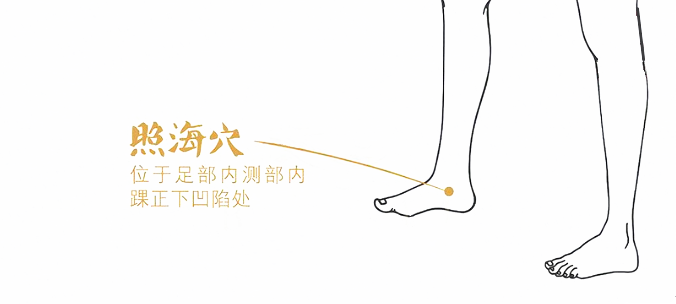
Massaging Zhao Hai can be very effective for throat pain, as it belongs to the Yin Qiao of the Extraordinary Meridians and intersects with the Kidney Meridian (Shen Jing), being one of the key meeting points of the eight meridians. It has the functions of nourishing the kidneys, clearing heat, and regulating the San Jiao, providing both nourishment and heat-clearing effects.
Sun Simiao in the Qian Jin Yao Fang referred to this acupoint as “Lou Yin,” indicating that if there is an issue with this point, it can lead to a decrease in kidney water, causing kidney Yin deficiency and resulting in ascending empty fire. Therefore, if we feel discomfort in the chest, dry throat, hoarseness, or even chronic pharyngitis, we can press this acupoint, which not only nourishes the kidneys and clears heat but also helps the functions of the San Jiao to flow smoothly.
To locate the acupoint, align the soles of both feet, and there is a small depression below the inner ankle, which is where the acupoint is located (see the above image). When massaging this acupoint, keep your mouth closed and do not speak; when you feel saliva in your mouth, swallow it down.
Generally, after pressing for three to five minutes, you will feel saliva in your throat, and the pain will immediately alleviate. Keeping your mouth closed is to allow the rising saliva to moisten the throat, which is what the ancients referred to as the “swallowing saliva method.” Pressing Zhao Hai can stimulate the essence of the kidneys, allowing fluids to rise and moisten the throat, thus alleviating throat pain naturally.
6. Shen Mai (Shen Mai): A Pure Yang Remedy for Cold Bodies
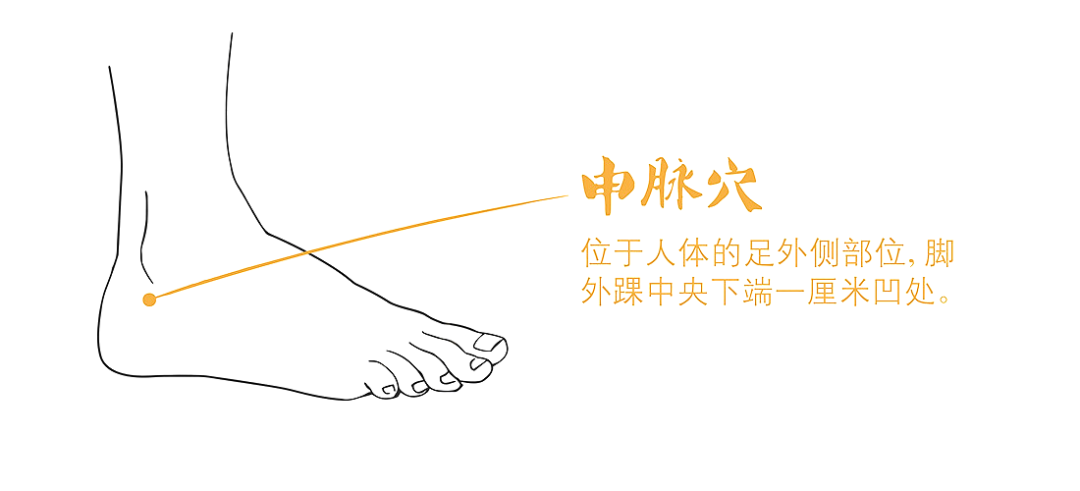
“Stiff waist and back, leg pain” is a clear sign of the bladder meridian being affected by cold evil. Since the Yang Qiao connects to the bladder meridian, and Shen Mai is an important acupoint of the bladder meridian, it is a pure Yang point. Using this acupoint can dispel internal cold evil and promote Yang Qi to reach the top of the body, balancing the body and allowing for agile movement.
When combined with Xiao Qing Long Tang (Minor Blue Dragon Decoction), it can achieve a synergistic effect of resolving both exterior and interior conditions, expelling cold evil from the body quickly while restoring Yang Qi, making it a miraculous acupoint for dispelling cold and reviving Yang.
Shen Mai is an important meeting point of the Yang Qiao and the Tai Yang Bladder Meridian, and it is easy to locate, situated in the depression directly below the outer ankle bone. When the body is affected by cold evil, it tends to curl up and shiver, which in TCM is called “contraction and pulling back.” Shen Mai has the meaning of extending the meridians, quickly mobilizing the body’s Yang Qi; when Yang Qi is sufficient, the cold evil will disperse.
7. Gong Sun (Gong Sun): Alleviating Dysmenorrhea and Spleen-Stomach Disorders
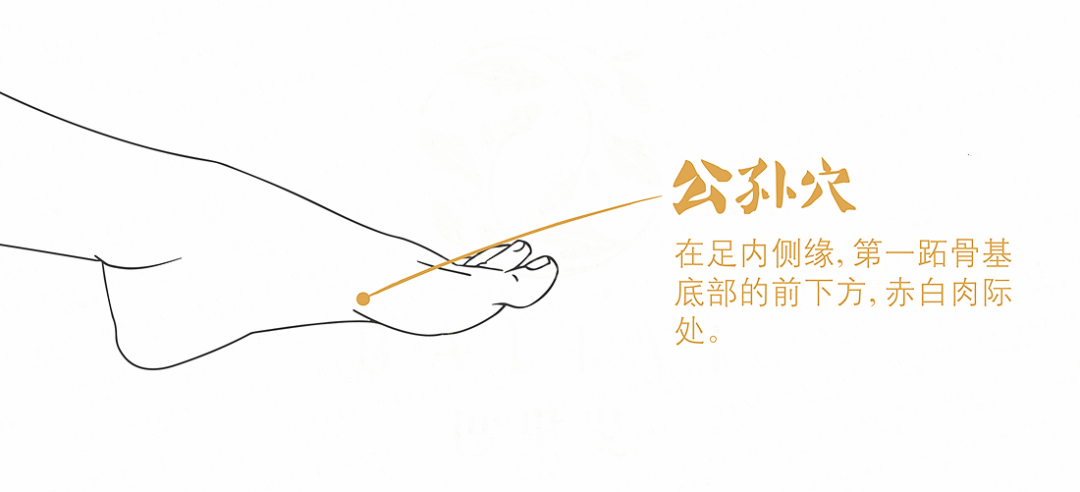
Gong Sun is the Luo point of the Spleen Meridian, associated with the spleen and connecting to the stomach, and directly communicating with the Penetrating Vessel located in the chest and abdomen, thus it has the effect of treating various disorders of the spleen, stomach, and abdominal area.
Medicine believes that treating all gynecological diseases should start with the spleen and stomach, especially for menstrual irregularities, where the stomach should be prioritized. The spleen governs blood and is responsible for transformation. If the spleen and stomach are deficient and cold, they cannot transform dampness, leading to dysmenorrhea, which may also be accompanied by symptoms such as vomiting, nausea, and headaches.
Women with dysmenorrhea can frequently press the Gong Sun acupoint. Gong Sun is located on the inner edge of the foot; I generally consider Gong Sun as a region, located behind the big toe, along a large metatarsal bone on the inner side of the foot. Pressing along this bone to the point where you feel the most soreness or pain is your own Gong Sun acupoint.
8. Lin Qi (Lin Qi): Elevating the Body’s Shao Yang Qi
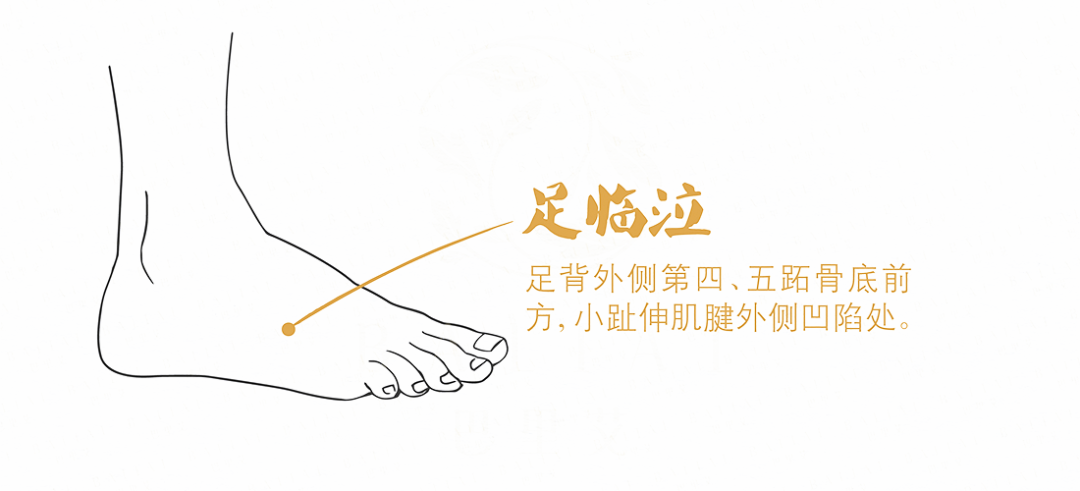
Lin Qi is one of the main acupoints on the Gallbladder Meridian, connecting with the Girdle Vessel, and is a wonderful acupoint that regulates two meridians. The Girdle Vessel encircles the body around the navel, like a jade belt, restraining the longitudinal meridians and enhancing the connection of Qi and blood flow between the meridians, making it a very important health meridian.
When using this acupoint, you can adopt a sitting position with your legs curled up; it is located on the outer side of the foot, in the gap between the fourth and fifth metatarsal bones. The Lin Qi acupoint primarily elevates the body’s Shao Yang Qi and disperses the stagnant Qi of the liver and gallbladder. Regular pressing can be more effective than professional foot therapy.





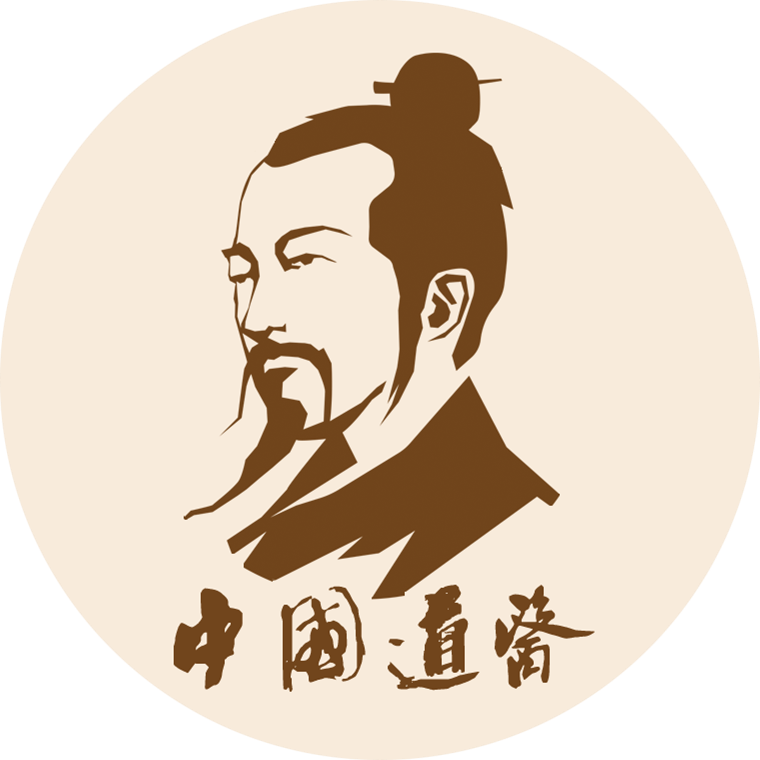
Taoist Medical Video Channel
⊙ The content of this article is for clinical reference only; non-professionals should not attempt to use herbs.
⊙ Some images and texts are sourced from the internet; if there is any infringement, please contact us for removal.
⊙ For Taoist medical consultations, add WeChat ID: daojiaof
⊙ For submissions and collaborations: [email protected] (original submissions are welcome)
Selected Articles
❶ The condition of your spleen and stomach is reflected on your face! Drinking a bowl of porridge daily can treat the spleen and stomach!
❷ An old TCM doctor summarizes the “three formulas” for treating spleen and stomach diseases!
❸ The essence of the Dao, revealing the secrets of alchemical cultivation!
❹ Do postpartum women really need to replenish, replenish, replenish?
❺ Learn one herbal medicine every day, the everlasting flower!
❻ Look! Use these five acupoints to clear meridians and alleviate multiple ailments!
❼ Is spring dampness “eroding” the body? Taoist medicine teaches you two practical methods for internal adjustment and external nourishment, regulating Qi and dispelling dampness!
❽ A bowl of soup in spring can prevent the need for prescriptions! Collect these disease-preventing and health-preserving soups!
❾ How to judge the level of a Daoist cultivator? Supernatural powers!

 Scan to Follow Taoist Medicine
Scan to Follow Taoist Medicine
Here, there are no chicken soup recipes, folk remedies, rumors, or advertisements, only reliable Taoist health and wellness knowledge.


